Happy New Year
We wish all our readers a happy and healthy 2017 and look forward to seeing you in the museum where you are sure to find a warm welcome as well as plenty to interest you.
Annual General Meeting
We didn’t have a huge turnout for the AGM but enough members turned up to allow the meeting to go ahead. The following were elected to the Management Committee:
Peggy Bearcroft Chairperson
Mike Purchase Vice-Chairman
Don Bearcroft, Curator
Richard Gilson, Deputy Curator
Margaret Dyer, Secretary
Bernard Jones, Treasurer
Sharon Saunders
Margaret & Trevor Cook
Judith Williams
Dale Challenger
Jennifer Price
As a registered charity we have to have a particular constitution and ours is as a company limited by guarantee. The following directors were confirmed at the AGM:
Don Bearcroft
Peggy Bearcroft
Mike Purchase
Richard Gilson
Margaret Dyer
Bernard Jones
Trevor Cook
Jennifer Price
The meeting gave an overview of the last year, an account of our financial position, and our hopes for the year ahead. The membership fee was confirmed as staying at £6 and is now due so please call at the museum to pay or send your cheque to the museum at ADMS, Market Street, Abertillery NP13 1AH.
We need your support more than ever in these difficult economic times so please continue with your memberships, the 100 Club, your volunteering, and your support at fund-raising events. Please encourage family and friends to become involved – the local area has changed out of recognition and our museum holds records of those changes and the story of how things were.
Diary Dates
Ongoing – WW1 Exhibition in the Museum
Saturday 4th February – Coffee Morning The Origins of Christmas Cards
December 100 Club
No. 81 Marge Selway £20
No. 83 Anne Howells £10
No. 80 Margaret Cook £5
Fundraising December tba
Coffee Morning 4th February
With Christmas just behind us, we are going to look at the Origins of Christmas Cards with a short presentation and then an opportunity to look at some of the wonderful old cards in our museum archive store. This promises to be a real treat so please come along and bring a friend. £1 entry includes tea/coffee and cake.
Newport Lite Ladders
Do you recognise the name of this company? It doesn’t come up on an internet search but the ladders made by this local company played a crucial role in the successful ascent of Mt Everest in 1953 by Tensing and Hillary. In order to scale the mountain, the team members needed to cross (as do climbers today) a heavily crevassed area at its foot. Previous expeditions had strung ropes to cross the crevasses but team leader, John Hunt, decided that lightweight ladders would do a better job and the ones made by this Newport firm were selected. Trials were carried out here in Britain, not using crevasses of course, simply suspending the ladders on supports and seeing how well they performed when a laden ‘climber’ crossed them. In the end, John Hunt decided that the firm’s standard builders’ ladders performed the best and so they were the ones that were taken on the successful expedition.
Wife Selling
I was told that the last woman sold in this way in Wales was at Blackwood in 1928 when a wife was sold for one pound but I have no other information. Do any of our readers know? Apparently, wife selling was often used from the late 17th century as a means of divorce since this was not available to the poorer classes of society and in those cases, the wife, who may have been a common law wife, was able to choose her new ‘husband’, but not all sales were this amicable. It was a practice that spread from England to Wales. The practice had no basis in law and there were prosecutions although there are also records of the Poor Law Commissioners requiring a wife to be sold rather than having to maintain the family in the workhouse. We are perhaps most familiar with this custom through Thomas Hardy’s novel “The Mayor of Casterbridge”. Although quite rare, wife selling apparently persisted into the early 20th century and one woman from Leeds told police in 1913 that her husband had sold her to a workmate for £1. Civil rights in this country have been hard won and women’s rights have consistently lagged behind those of men – it was not until 1882 that married women were allowed to own property and money in their own right, juries were all male before 1919, it was not until 1928 that all women were entitled to vote and it was legal to pay men more than women for the same jobs until 1970.
And what about husband selling? Apparently there are a small number of recorded cases in the 19th century but they mainly amounted to a form of divorce with the man being sold directly to a new wife.
Christmas Fayre £429 raised
This was a very successful event and raised £429 so thank you everyone. Here’s a photo of three of Santa’s helpers that day, otherwise known as Val, Sharon and Judith.
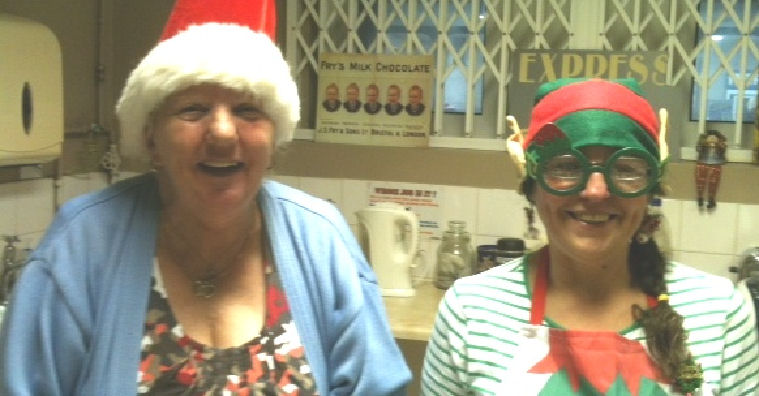
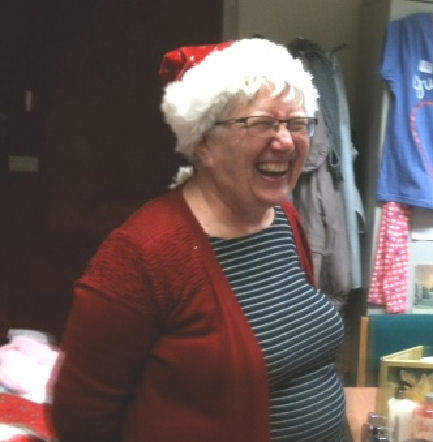
Nevill Hall Hospital
I should have reported this last year as 2016 was the fiftieth anniversary of the commencement of construction of this local hospital which opened in 1969, the new buildings replacing the Victorian mansion which previously served as Nevill Hall Hospital. The mansion, known as Nevill Hall, was built on the site of a former house in the 1860s by the Blaenavon Ironmaster James Hill. The house he built was known as ‘The Brooks’ but when it was purchased by the Marquess of Abergavenny in 1890 the name was changed to Nevill Hall and the grounds extended to included the land up to the River Usk, this being land which the Marquess already owned. The Marquess died in 1915 and the house had two further owners before becoming a hospital in 1920. The building has been listed for its special interest as a substantial well-preserved former country house with historic connections with both a prominent local industrialist and with the Marquess of Abergavenny. Bradney includes a photo of Nevill Court, which he describes as ‘handsome’ in his ‘A History of Monmouthshire’, Volume 1, Part 2a, Page 182. It shows a façade we never see today.
Ebbw Vale Works Museum
The Gwent County History Association presented an award for Services to Local History to the Ebbw Vale Works Archival Trust which runs the Works Museum. The museum is based in the General Offices, the former main office at the Steelworks, along with Gwent Archives. As with our own museum, the Works Museum is an independent museum and entry is free. Visitors will find an eclectic collection of artefacts and archived material covering the evolution and development of coal, iron and steelmaking in the area from 1790 to the closure of the works in 2002 and its subsequent demolition. The museum is open Mondays to Fridays and a visit will doubtless bring back many memories of a works we all knew.
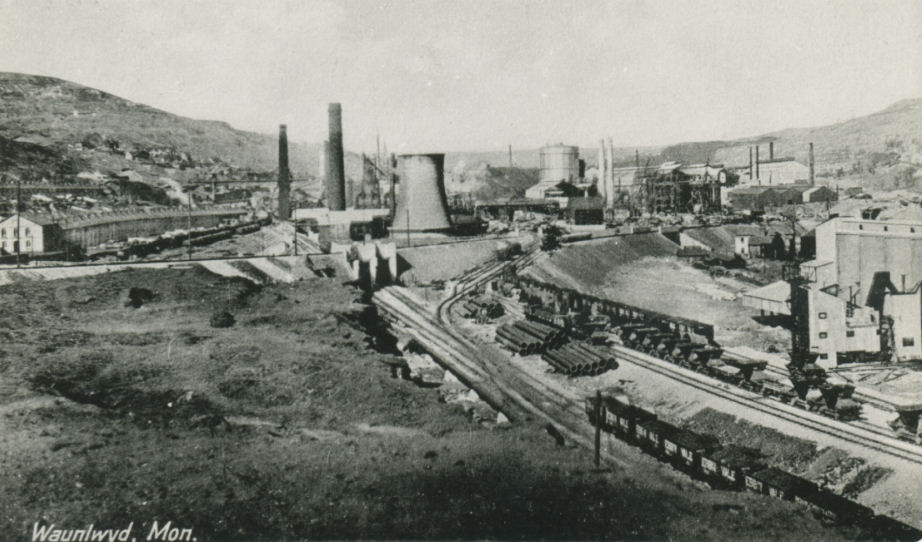
Our Museum Archives
Among the items in our archive store is an illustrated and framed declaration of abstinence issued by the Temperance Association and which says:
“I Nicholas Bailey agree to abstain from all intoxicating liquors as a beverage, and to discountenance their use by others.
Nicholas Bailey became a member of this association on the 11th of October in the year 1842.
It is good neither to eat flesh, nor to drink wine, nor anything whereby thy brother stumbleth, or is offended, or is made weak. Rom XIV.21.
Two thousand medical men have subscribed that the most perfect health is compatible with total abstinence from all intoxicating beverages, whether in the form of ardent spirits, or as wine, beer, ale, porter, cider & “.
The declaration is lavishly illustrated, quite large, and comprises quite an impressive picture – just one of the many treasures tucked away in the archives.
Book Corner
“Mametz” by Aled Rhys Hughes published by Seren, price £14.99.. This is what Seren says about the book:
Mametz marks the centenary of the Battle of Mametz Wood, the most significant battle in World War I for Welsh troops.
Over 4,000 soldiers of the 38th Welsh Division were killed or wounded there in July 1916. For the past five years photographer Aled Rhys Hughes has visited Mametz each July to make images that are entirely about Wales even though they are located in France. The result is a series of 49 striking colour photographs divided into seven sets of seven images. They cover images of actual trees from the war (some ‘embracing’ artillery shells), battlefield detritus, and military mementoes. Also included are images of places of modern pilgrimage and remembrance (including some poignant contemporary expressions of grief), place names and an evocative section on ‘twilight: the dangerous time’.
Reminder – fees due
Just a gentle reminder for our members to renew their membership of the Museum Society - £6, and that renewal fees may also be due from some of our Vice-Presidents - £25. Thank you very much. Those of you who were at the AGM will know how many thousands of pounds we need each year to keep the museum running.
Museum Matters
Christmas Past & Present
We were invited to Christmas dinner at our son Lyn and his wife Janice’s home in Oakdale with our grandchildren. After dinner we adjourned to the living room where we played games then I heard the voice of our youngest grandson Luke who is serving on H M S Ocean in the Gulf., we were not only able to talk to him but also see him in his hotel in Dubai. He could see all of us and we could all see and speak to him.
I found it an emotional and experience, incredible due to the distance’s involved. As I said to Janice, “this was the stuff of science fiction when I was a boy”!
This set me thinking of the past when I was young living at Pant-Y-Pwdyn. The street and house lighting was by gas, our neighbours used Radio Relay sets to listen to the Wireless which only had 4 stations at most. My father not only repaired watches but also built his own wireless (radio) sets; he bought watch and radio magazines and sent for what he required for the watches and to build his radios from the adverts in them. He set the loudspeaker into a plywood board with a silk and fretwork cover for the speaker. This enhanced the base sound in the radio.
Dad made a wiring diagram and gave me the items to build a crystal set which I enjoyed doing. I used it afterwards learning Morse Code with my friend so we could communicate with each other.
Whereas our neighbours could only listen to a few radio stations my father had erected two radio masts with an Ariel between them. This allowed him access worldwide radio stations; my favourite was Radio Luxembourg, later the Pirate Radio Ships replaced it with more up to date Pop Music. Other programs me and my friends listened too were, Dick Barton Special Agent, Jet Morgan, Journey into Space and of course The Goon Show.
My father when young had ran his own boxing club, having keen interest in boxing matches broadcast from America. These broadcasts were late at night or early morning due to the time difference. The men who could not receive the broadcast would come to our home and listen to the fight. I was sent to bed.
The wireless set had 2 dry batteries and an accumulator which had to be 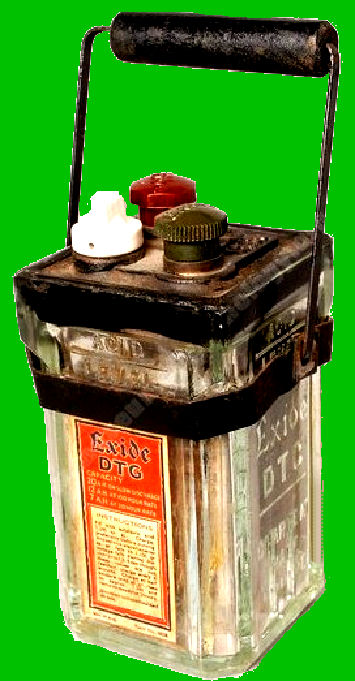 taken to be charged after a period of use.
taken to be charged after a period of use.
Dad always said, “Once we have electricity installed we can do all manner of things!” the day eventually came when the street lighting and the houses were connected to the mains supply. The first thing we had was a Service electric washer for mam, then the wireless set was changed for a mains radio and dad changed from building wireless sets to building television sets. I set up an automatic lighting system for my mother in the scullery whereby the light came on and went off when opening and closing.
The world was changing and things seem to happen quickly, a lot of this was due to the scientific advances made during the World War II. Men landed on the moon (Jet Morgan wasn’t there) and things that were once science fiction now became fact.

(The thermionic valves that my father used in his wireless sets are now in our museum.)
I was a member of Abertillery Sea Cadets and wanted to join the Royal Navy but my parents would not sign for my entry so after meeting and marrying Peggy I ended up working in the mine. It was not surprising that I was an apprentice electrical engineer. A Plant Maintenance Officer said that I took to the work “Like a duck to water”.
When I went to technical college I learned all aspects of electrical engineering work including house wiring. The N C B owned a number of houses at that time and any electrical work required in them was done by the electricians from the nearest colliery. A cushy number!
I often did electrical work in houses; I also worked for a builder rewiring houses during strikes taking one of my son’s to help me doing this work, they became quite good at it. My father was self taught, repairing watches building radios and televisions. This was not unusual at that time. Service certificates were given to people who proved they could do a job, today 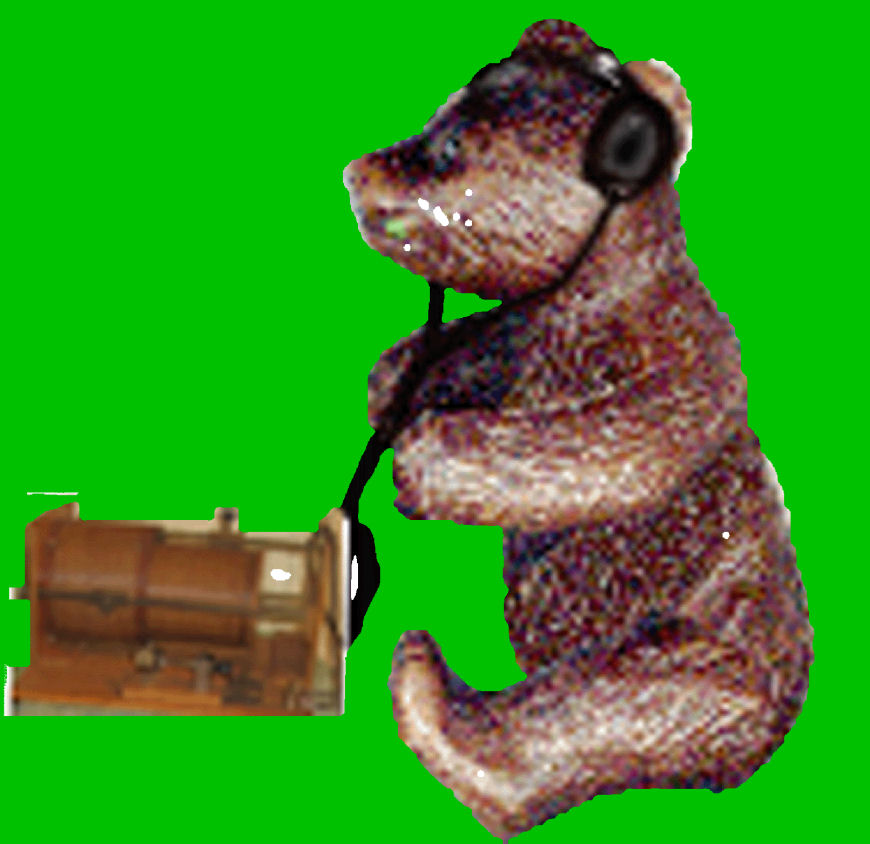 however you are frowned on doing these things no matter how much experience you have.
however you are frowned on doing these things no matter how much experience you have.
Don Bearcroft Curator.
